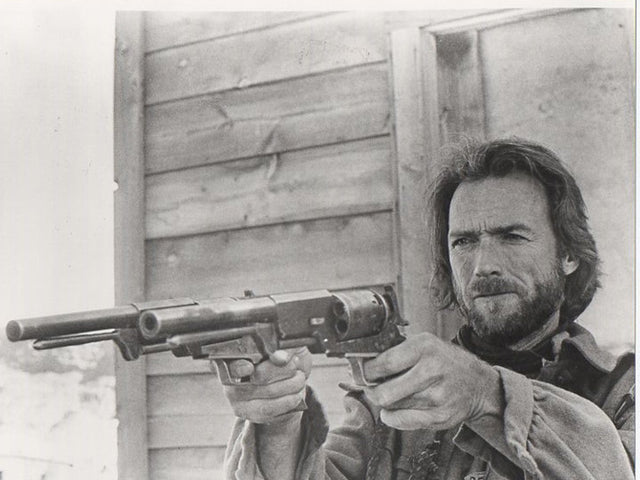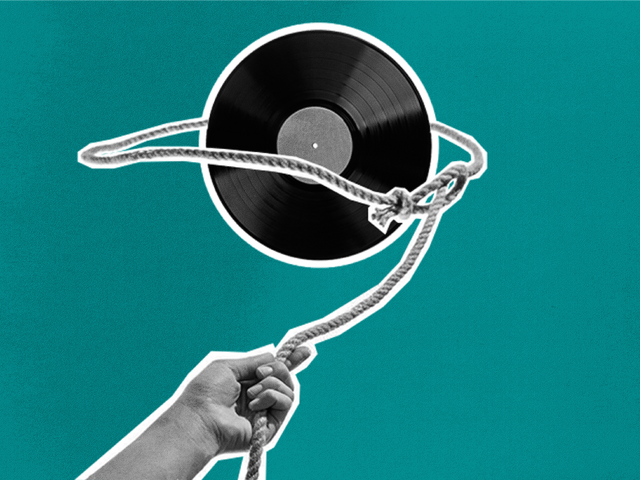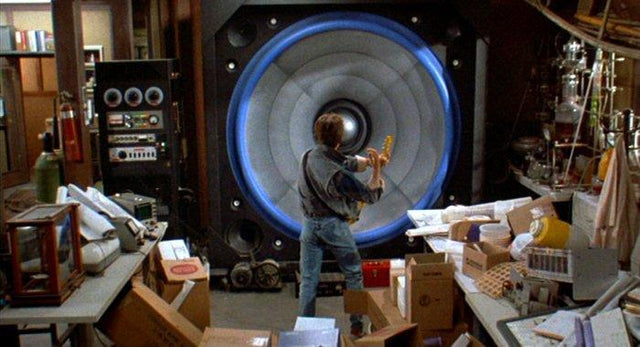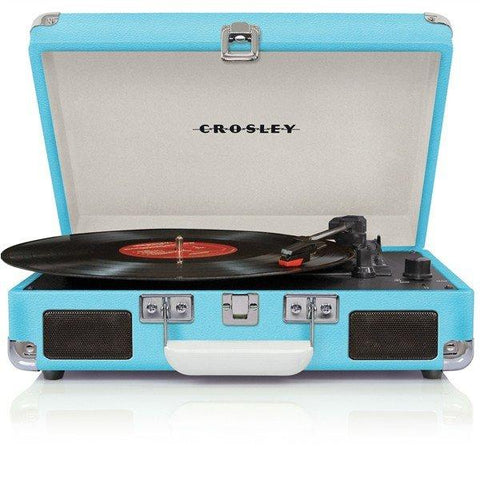One of the big deals of "High Fidelity Audio" when it began to form as a concept was that it came in stereo. Two speakers placed in such a way in front of you and fed with suitable material gave a more engrossing and believable performance thanks to the creation of a soundstage- a perception of the performance extending between points in front of you as would be the case if the music in question was performed live in the room.
This is achieved by placing different levels of effects and instruments in the left and right signals, moving information from one channel to the other and using it to make the brain process the sound as a block of information- not simply one ear hearing one channel but the ear on the other side of your head hearing that channel fractionally later and using it to create a mental image that exists in three dimensions.
That's the theory anyway. Stereo is an absolutely vital part of the musical experience- provided of course, the material you are listening to is in stereo- but it only functions with a degree of sympathetic setup and placement. You can spend the sort of sums that would bring to mind a space program on audio equipment and if you take whatever miracle of science and engineering you've chosen for your speakers and place them side by side, they are still going to be largely ineffectual at generating a stereo image.
This means if you are reading this and your speakers perch conveniently on either end of a narrow shelf- or you happen to be an outgoing President of the United States and they perch on either end of a table- I'm afraid that what you're hearing isn't really stereo. I appreciate that we all have limitations to what we can do with our audio equipment in domestic settings- be it down to space, furniture, pets, children etc. but that's how it is.
So what is the ideal? Well, to be awkward, there is no one perfect 'hot take' that applies perfectly to every speaker, but there are some basic applicable rules that can be adapted to almost any situation, and these are the ones we will try to cover. Let's start with the most important one.
Distance Between Speakers
This is the key- if you take nothing else away from this piece, this is the bit that matters. For speakers to create any sense of stereo image, they need to be a reasonable distance apart. How far apart? This depends on the size of your speakers, the distance to your listening position and the size of the room, but a good place to start is two metres (or a slightly less snappy, 6.56ft if you're doing this in Imperial). This figure is one that many speaker manufacturers work to in the design phase for their products and represents a good starting point.
You will then want to have a listening position that is equidistant between the two speakers and at such a distance that you can draw an equilateral triangle with one line between the speakers and the point extending out to you. It is unlikely that any conventional pair of speakers will sound bad once this has been done- some can be made to sound better but pretty much everything will deliver a believable stereo image from this position.
Toe In
What's next? Depending on if your triangle is a little flatter than equilateral, if the speakers are further apart than two metres or simply who designed them, you may find that putting some toe in on the speakers helps improve things further. What is toe in? It is angling the speakers inwards to the listening position so that they point down the lines of your notional triangle.
Results of toe in are very, very dependent on the speaker you use. I have one pair of speakers that are designed with a view to sitting in corners and firing out at a fairly radical 45 degree angle whereas conversely, I have another pair that start to sound very unhappy with any degree of toe in applied at all- even if they are relatively far apart. If in doubt, ask the company that made them as most will have some useful pointers.
Height
Having put your speakers on the correct axis, it will be equally beneficial to ensure they are at the right height. Once again, this will vary depending on a few factors, some of which are in your control and some of which aren't. The best starting point is to try and ensure your tweeters are roughly at the height of your ear when you are in your preferred listening position. As with the two metre rule, this represents a good starting point to work from to get the results you prefer.
More so with distance apart, there is a degree of subjectivity to this. I have long preferred to have my tweeters very slightly above my seated ear position- not by much, no more than a few inches- because I find it gives a sense of height to the stereo image that is otherwise lacking. In the case of very large speakers, this can frequently happen whether you like it or not. Other people vehemently disagree so have a tinker and see what works for you.
Isolation
Your speakers will almost certainly have been designed to keep their drivers isolated from the outside world (and indeed the outside world from them) but unless you've got some very hefty cabinets indeed, they will benefit from being given a little help. First and foremost, you really, really don't want your speakers on the same surface as the turntable- the vibrations it creates will be something that directly affects the stylus of the record player. Putting some space between them will be hugely beneficial.
Having done this, it is entirely up to you have seriously you take the business of putting them on stands. Stands vary in price from a few dollars to several hundred but the simple business of getting them at the right height and decoupling them from the outside world will be hugely beneficial to their performance and even sticking them on a pair of sturdy chairs will go a fair way to achieving this. A good looking pair of stands will help smarten up the way your system looks as well as performs though.
Given that good speaker placement is one of the cheapest things you can do- while you might need to buy speaker stands, otherwise, you are making no purchases at all- it is something that you can really benefit from spending a little time on. Wringing every last drop of performance out of what you have can stave off the need for an upgrade as you can realise vastly better performance from a pair of speakers if they are set up correctly. Get the basics right and you'll be staggered at what your equipment can do.
Ed is a UK based journalist and consultant in the HiFi industry. He has an unhealthy obsession with nineties electronica and is skilled at removing plastic toys from speakers.
Join the Club!
Join Now, Starting at $44
Exclusive 15% Off for Teachers, Students, Military members, Healthcare professionals & First Responders - Get Verified!










